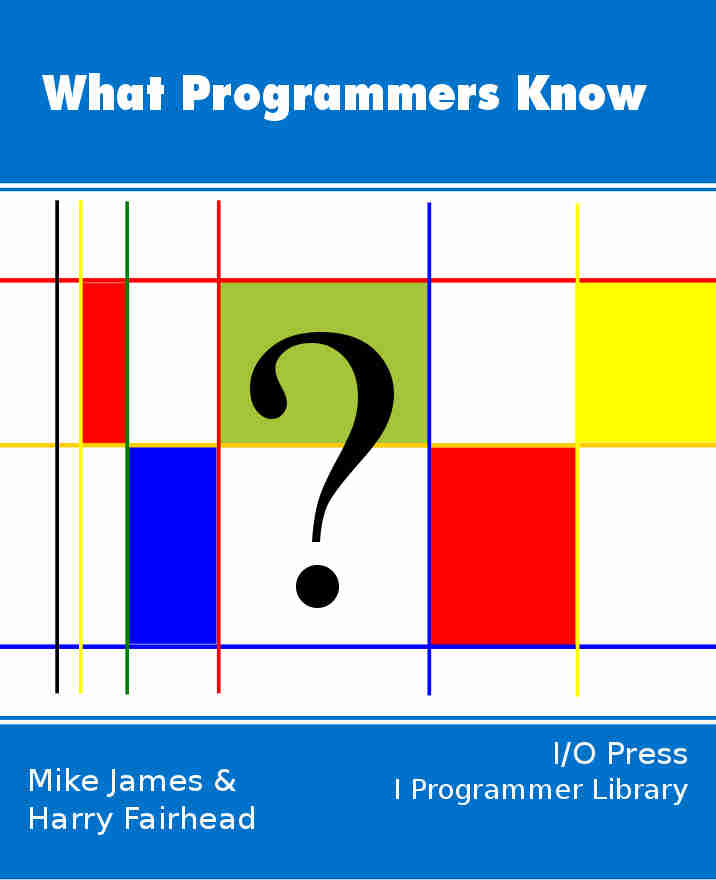| Binary - Negative Numbers |
| Written by Mike James | |||||||
| Sunday, 25 June 2023 | |||||||
Page 3 of 3
Binary complementsNow convert all of this to binary and implement it in electronics and be amazed at how natural it all seems. If you know how to program the first thing it all explains are those “funny” numerical ranges that you are given for variables of different sizes. For example, a 16-bit variable or 16-bit hardware storage location is usually quoted as being capable of holding a number in the range +32767 to -32768. This corresponds to the positive range using 1 to 32767 and the negative range using 65535 (i.e. -1) to 32768 (i.e. -32768). You can now see why it can’t hold quite as large a positive number as a naegative number. The next pleasing surprise is that you can immediately tell when a number is negative by looking at the highest order bit. For example for 16-bit values the positive range written in binary is:
to
and the negative range is
to
and so all positive numbers have a zero high order bit and all negative numbers have a one. This means that you can interpret the high order bit as a sign bit - although we didn't design things this way. The sign bit is just a consequence of the way we have divided up the range into negative and positive numbers. The final piece of good news is that converting a value into two's complement is very easy. First convert it into one's complement, i.e. subtract every bit of the value from 1. As
and
this is equivalent to “NOTing” in the sense of Boolean logic each bit of the value. In other words to form the one's complement all you have to do is take the logical NOT of the value. This is easy but it gets better because all you have to do is add one and the result is two's complement. In fact you don’t even have to do the “add one” as a separate operation because you could just start any addition off with an initial carry set to 1 instead of 0. Exactly how it is done varies according to the hardware design but you can see that it isn’t difficult. In fact you should be able to see that you don't need any special hardware to do subtraction at all - simply a full adder and twos compliment arithmetic. Why bother?Do you really need to know about complement-based arithmetic? The answer is, at the moment, you do if you want to be a programmer or a hardware designer. The reason is that we are still close enough to the computer hardware we program for these things to show through. This is especially the case when you get involved in bit manipulation or change the precision of a value. Occasionally you can create serious bugs simply because you don’t realise that the positive value that your machine is displaying with lots of digits should be a negative value with far fewer digits. Another example is the simple shift operation which is supported in many computer languages. A shift of all the bits in a number to the left multiplies the value by two. A shift to the right divides it by two. However if you are working with negative numbers as well as positive things can be more difficult. For example, if you shift a value to the left then any change in the highest most bit is equivalent to a sign change. So if you detect a change in the highest bit you have multiplied by two to the point you have caused an overflow. Shifting to the right brings with it a similar problem. If you shift in a zero to the top-most bit you make the number positive, but if you shift in a one you make it negative. What you really need to do for a signed number is to shift in a value that is the same as the top-most bit. In most machines there are two forms of shift - logical shift introduces a zero to the top-most bit and an arithmetic shift simply keeps the top-most bit the same.
Related Articles
What Programmers Know
Contents
* Recently revised
Comments
or email your comment to: comments@i-programmer.info To be informed about new articles on I Programmer, sign up for our weekly newsletter, subscribe to the RSS feed and follow us on Twitter, Facebook or Linkedin.
<ASIN:0879304960> <ASIN:0521702380> <ASIN:0380793245> <ASIN:0070211205> <ASIN:0486409139> <ASIN:0380793245> <ASIN:048641146X> <ASIN:0521702380> <ASIN:0521878586> <ASIN:0071431195> <ASIN:0750645822> <ASIN:0735611319> <ASIN:0070650500> <ASIN:0071452818> <ASIN:0521370957> <ASIN:0763741493> <ASIN:0596510047> <ASIN:0060512806> |
|||||||
| Last Updated ( Sunday, 25 June 2023 ) |


